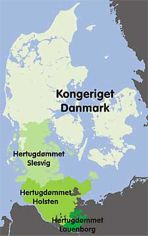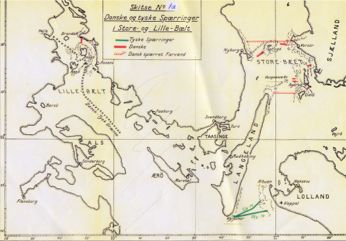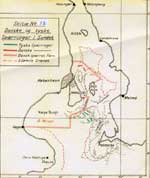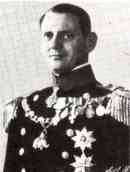|
You are here: 4Campaigns & Battles4Index4The 1st World War |
||||||||||||||||||||||||||||||||||||||||||||||||||||||
|
The Navy during the 1st World War (1914-1918):
A
well-equipped Navy and well-trained Personnel ensured
|
|||||||||||||||||||||||||||||||||||||||||||||||||||||
|
When the 1st World War broke out in 1914, the Danish navy comprised a considerable number of ships. In addition, it was quite a modern navy suitable for Danish waters, and the state of personnel training was very good after several years of exhaustive squadron exercises. Thus, Denmark had a well-equipped navy ready to defend its neutrality. As we today analyze Denmark’s situation when war broke out in 1914, it is important to bear in mind that it was quite a different, and smaller, country compared to the country we know today. Southern Jutland, the duchy Slesvig, and the duchies Holsten and Lauenborg had all been part of the German Empire since the war of 1864. This meant that Denmark and Germany bordered each other on the body of water known as Little Belt. Thousands of young Danish men living south of the border in Southern Jutland were forced to participate in the war fighting for the Germans. |
The Kingdom of Denmark |
The security force is established
Following the July 28, 1914 declaration of war on Serbia by Austria-Hungary, things developed very quickly in the geopolitical arena.
In Denmark, The Training Squadron had been fitted out during the summer, as had been the case during the previous years. Thus, most of the battle ready units were already fitted out when war erupted.
The Training Squadron was ordered to sail to The Sound immediately following the commencement of hostilities.
On July 31, 1914 at 2130 The Danish Government issued a written directive ordering The Navy to establish a Security Force.
Following this, the admiral in command, vice admiral O. J. Kofoed-Hansen, assumed supreme command over the fitted out naval vessels, while responsibility for seaward defense of Copenhagen was given to the commander of the floating defense, Rear Admiral A. F. Mazanti Evers.
The next morning, having replenished at Holmen, most of the ships were ready to join the newly established Waterways Squadron 23 hours following the issuance of the order to establish the security force.
|
|
Vice admiral |
|
|
Rear admiral |
The Waterways Squadron assembled in the Sound just south of Drogden during the evening of August 1. The ships on 24 hours stand by at Holmen were ready to depart August 2.
The entire Waterways Squadron was on station in The Sound on August 5, 1914.
Denmark Stays Neutral
As the navy's security force was being readied on 1. August, a declaration was sent to all nations advising that Denmark would stay totally neutral during the war between Austria-Hungary and Serbia.
On 4. August Denmark issued a similar message in connection with the declarations of war between Germany and Russia as well as Germany and France.
Later the same day, Germany responded to an English ultimatum regarding the violation of Belgium’s neutrality, following which England declared war on Germany.
The First World War was now a reality.
The Danish government was determined to enforce Denmark's neutrality.
Mine laying
Early in the morning on August 5, 1914, it was reported that German ships were engaged in mine laying in the southern part of Langelands Belt.
Early in the morning on August 5,
1914, it was reported that German ships were engaged in mine laying in the
southern part of Langelands Belt.
(Map from:
Archives of the Royal
Danish Naval Museum)
That same morning the Germans verbally demanded that Denmark initiated mining of the Great Belt.
|
Rather than simply meet the German demand, a hastily called government council, in which also participated the commanding admiral, vice admiral O. J. Kofoed-Hansen, decided that same day to deploy mines in both the Sound, the Great Belt and the Danish part of Little Belt. The minister of defense consequently ordered mining of the Danish straits, and the foreign minister personally informed the German and English envoys that: "In order to enforce neutrality and keep military operations away from Danish waterways and coasts and to secure continued connection between the various parts of the country, the Danish government has decided to close Danish territorial waterways in the Sound as well as the Great and Little Belts by mining." |
Mine Fields in the Sound |
The Navy's Task
Following the decision to mine the Danish straits, the navy was confronted with a challenging task. In addition to safeguarding Danish neutrality and meeting attacks on Danish territory the mine fields had to be defended.
-2553-1980-n.jpg)
Each squadron was normally composed of at least
one coastal defense ship as flagship, one or two cruisers and a number of
torpedo boats and submarines as well as some support ships. The coastal defense
ship
OLFERT FISCHER with the cruiser
HEJMDAL in the background is seen here.
(Photo: Archives of the Royal
Danish Naval Museum)
Strategically, the given tasks were conflicting, since safeguarding neutrality required dispersal of the forces, while defense of the mine fields and response to a possible attack required a concentration of the forces.
The dilemma was resolved by dividing the Waterways Squadron into a 1. Squadron, stationed in the Sound, and a 2. Squadron, stationed in Great Belt, while a smaller number of ships were stationed in Little Belt and Smaalandsfarvandet.
Each squadron was normally composed of at least one coastal defense ship as flagship, one or two cruisers, six to nine torpedo boats and three to four submarines as well as some support ships. In addition, the floating defense in the roads of Copenhagen comprising four gun boats or patrol boats and twelve to fifteen older torpedo and patrol boats with some support ships.
Also, during the entire world war patrol ships were stationed at the Skaw, the West Coast of Jutland (Esbjerg), the Faroe Islands, Iceland and the Danish West Indies.
However, the long stretches of coasts were only sporadically guarded.
Violations of Neutrality
During the entire world war the warring parties attempted to respect Denmark’s neutrality, but never-the-less 164 violations were reported.
The most serious, and bloody, violation took place August 19, 1915, when the British submarine E.13 - grounded the evening before on the southern point of Saltholm in the Sound - was attacked by a German torpedo boat in Danish territorial waters.
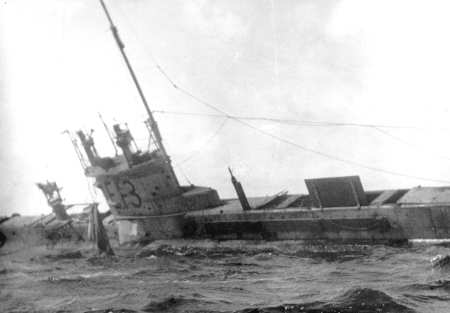
The abandoned and destroyed British submarine
E.13 aground at Saltholm following the German attack August 19, 1915.
(Photo: Archives of the Royal
Danish Naval Museum)
Despite the presence of Danish ships in the area, the German torpedo boat attacked and destroyed the grounded British submarine.
The attack resulted in the loss of 15 British submariners.
One of the more peaceful violations took place during November 1916, when a German submarine ran aground due to engine trouble outside of Vrist, just south of Harbooere on the west coast of Jutland.
A Danish warship was ordered to the area to guard the submarine and enforce Danish neutrality. This turned out to be an easy task. When the German submarine commander found that it was not possible to refloat the submarine, he decided to scuttle the boat.
Later it turned out that the grounded and now scuttled German submarine was the U20, which in May 1915 had sunk the British passenger ship LUSITANIA.
A sinking which contributed considerably in the United States decision to go to war.
|
The Loss of the submarine Dykkeren On 9. October 1916 the Navy suffered an accident when the submarine DYKKEREN collided with a Norwegian freighter during routine diving in the Sound off Taarbaek and sank. The crew was rescued, however the commander - first lieutenant Svend Aage Christiansen - perished in the submarine’s tower while supervising the rescue of the first three crew members. Approximately six hours later the remaining five crew members were rescued when one of Svitzers salvage boats managed to bring the bow of the submarine to the surface. The DYKKEREN was salvaged a couple of days later and brought to the naval dock yard. However, the submarine was decommissioned as it was estimated that cost of repair would exceed the value of the boat. |
The commander of the DYKKEREN, first lieutenant S. Aa. Christensen, was killed during the accident. |
The Danish West Indies
In the fall of 1915, the cruiser VALKYRIEN, commanded by commodore Henri Konow, was dispatched to the Danish West Indies as station vessel.
During the last fifty years several negotiations had taken place with the United States regarding the sale of the islands. During the world war the Americans were deeply concerned about the possibility that the Germans would attempt to take over the Danish islands, where German companies had significant economical interests.
A vote in Denmark had produced a majority for the sale of the islands to the United States. The continued negotiations were now successful and it was decided that the VALKYRIEN was to remain in the West Indies until the handover. At the same time, the commander, Captain Henri Konow, was installed as caretaker governor.
-369-1962.jpg)
The cruiser
VALKYRIEN
as station vessel in the West Indies
during 1st World War.
(Photo: Archives of the Royal
Danish Naval Museum)
On March 1, 1917 Dannebrog (the Danish flag) was lowered at the military barracks in Charlotte Amalie on St. Thomas and the Danish West Indies, St. Thomas, St. Croix and St. John were handed over to the United States after Danish possession since 1666.
The following day, as the cruiser VALKYRIEN commenced the voyage back to Copenhagen, a foreign flag was flying over the area which for 245 years had been the western limit of the Danish navy patrols.
CEASE FIRE
Soon after implementation of the armistice November 11, 1918, the government took steps to reestablish normal traffic conditions in the Danish waterways.
On the same day as the armistice was a reality, recovery of the mine fields was initiated, the closed parts of the waterways were reopened and the lighthouses brought back into operation.
The security force was gradually reduced, and by the end of 1918 only the coastal defense ship HERLUF TROLLE, the cruiser HEJMDAL and some torpedo boats had been fitted out to form the winter squadron. In addition, a number of smaller craft were stationed in the Danish waterways.
But the war still caused casualties
Mine sweeping and boats stationed by the German mine fields still required a great deal of equipment.
December 14, 1918, more than a month following the armistice, three Danish marines were killed and eight were wounded, when the torpedo boat SVAERDFISKEN ran into a German mine by Albuen in the Great Belt.
-167-1958.jpg)
The torpedo boat SVAERDFISKEN is here seen with missing stern on Holmen following the mine accident in Great Belt December 14, 1918.
The situation also required that navigation of foreign ships in Danish waters was closely monitored.
It was mainly ships belonging to the new Russian republic that required special watching, but also the unrest in Germany and a large scale invasion of Russian prisoners of war who fled from Southern Jutland to Aero and the Southwestern coast of Funen required a considerable number of torpedo boats and submarines for patrol duties in Little Belt.
This patrol duty had to be maintained for a long time after the official stand down of the Security Force March 31, 1919 at 1200 hours.
The Southern Jutlanders are repatriated
|
For parts of the navy the war was still not over when the Security Force was discontinued. The cruiser VALKYRIEN, which in the summer of 1919 was fitted out as a cadet training ship, was dispatched to Egypt and Malta in July to pick up Southern Jutlanders released as prisoners of war. These Danes from Southern Jutland had been forced into service in the German army during the World War. The cruiser, which among her complement of young cadets counted Crown Prince Frederick - the later admiral, King Frederick IX - succeeded in returning to Denmark in September with a total of 160 Southern Jutlanders on board. Already during October 1920, the VALKYRIEN was once again dispatched. This time to Holland, Belgium and France once more to repatriate released Southern Jutland prisoners of war, in total 135 Southern Jutlanders were embarked. |
King Frederick IX as a young cadet in 1919 participated in bringing Southern Jutland prisoners of war back to Denmark. |
|
Sources: |
||
|
& |
Danmarks Flaade, by Lieutenant Commander K. Dahl og H. Hjorth-Nielsen, Published by Selskabet til udgivelse af Kulturskrifter, Copenhagen, 1934 |
|
|
& |
Flåden gennem 450 år, by Steen R. Steensen, Martins Forlag, 2nd edition, Copenhagen, 1970 (ISBN87-566-0009-7) |
|
|
& |
Flåden og Dansk Vestindien - Den danske flådes togter til Caribien 1671-1917, by Per Nielsen, Forlaget Marine-historiske Skrifter og Dansk Vestindisk Selskab 1997 |
|
|
& |
Flåden under første verdenskrig - O. Kofoed-Hansens og V. Jøhnkes optegnelser, by Tage Kaarsted, Jysk Selskab for Historie, Universitetsforlaget in Aarhus, 1976 (ISBN 87 504 03 745) |
|
|
44You are also referred to the Naval Bibliography |
||
![]()
- Do you miss a major event on this Site,
or do you hold a great story?
Are you able to contribute to the unfolding of
the Danish Naval History,
please
e-mail
me, enclosures are welcome.
Please remember to list your sources.
You can also use the Naval Web Forum on this web-site.
![]()
|
MORE IN-DEPTH STORIES FROM |
|
The British Submarine E13 (1915) - The Loss of the submarine DYKKEREN (1916) - Drama in the North Sea (1916) |
|
THE TOPIC STORIES: |
|
- Wars against England (1801-1814) - Reconstructing the Navy (1814-1848) - The 1st Schleswig War (1848-50) - The interim War Years (1850-64) - The 2nd Schleswig War (1864) - The long Period of Peace (1864-1914) - The Navy during the 1st World War (1914-1918) - The Interim Years (1919-1939) - The Navy during the 2nd World War (1939-1945) - The Cold War Period (1945-1989) - |
|
SEE ALSO: |
-
This page was last updated: -
This page was first published: January 21, 2006
Copyright © 2013-2016 Johnny E. Balsved - All rights reserved - Privacy Policy


-95-1996.jpg)
